1. Impressive Size and Strength
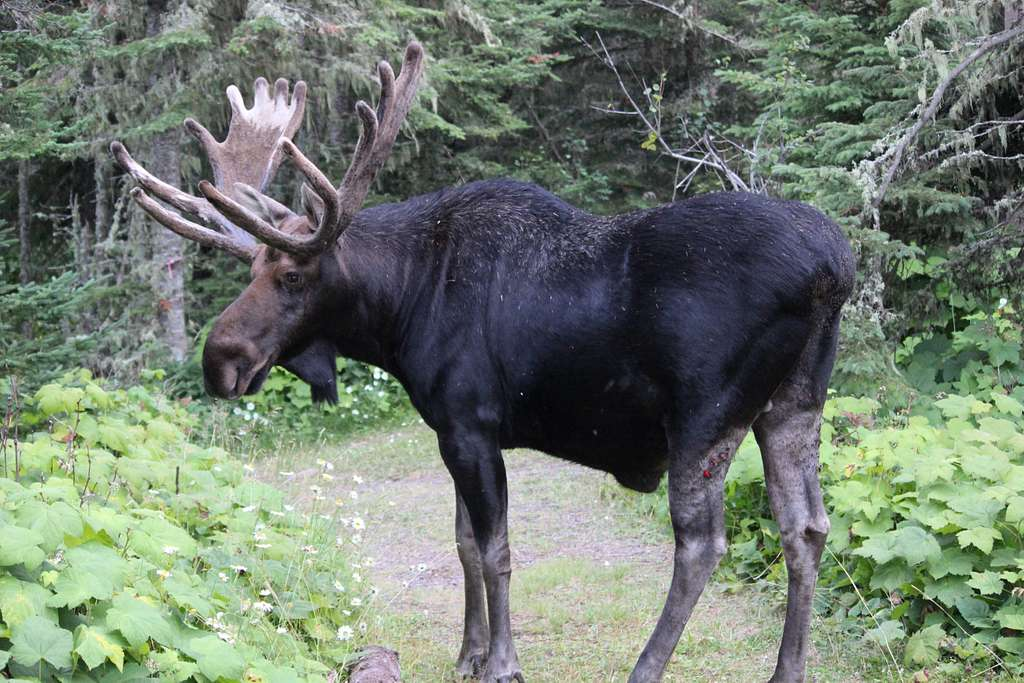
Moose are enormous creatures. According to the Alaska Department of Fish and Game, males (bulls) reaching up to 1,600 pounds and standing over 6 feet tall at the shoulder. Their massive frame allows them to move through dense forests with ease, but their sheer size makes them a formidable presence. For comparison, a moose weighs more than a typical horse, and its legs are longer and more powerful. This size makes them hard to miss, but it also means they pack an incredible punch. When they charge, they are capable of knocking over cars or seriously injuring people with a single blow. Their strength is not just in their ability to push things around — moose can deliver powerful kicks with their hooves, which can cause life-threatening injuries.
Because of their mass, even a simple collision with a moose can be deadly for humans, especially in areas where they often cross roads. Their physicality makes them more dangerous than many realize, as it takes little for them to cause significant harm. Moose have the strength to break through thick brush and trees when necessary, which allows them to quickly close the distance between themselves and potential threats. Their sheer power is why anyone approaching a moose should treat it with extreme caution.
2. Fast on Their Feet

Despite their large size and seemingly slow movements, moose are capable of running at speeds of up to 35 miles per hour. This makes them surprisingly quick when they need to be. They can easily outrun most humans and even some animals, which makes them harder to avoid in an emergency situation. When startled or threatened, a moose can also make sharp turns and cover a lot of ground in a short amount of time, which further adds to the unpredictability of an encounter. According to Wide Open Spaces, their agility is not limited to running — moose are also excellent swimmers. They can swim for several miles at a time and cross bodies of water with ease.
Their long legs allow them to cover great distances at a pace that may surprise anyone who is unfamiliar with their capabilities. This speed and stamina make it difficult to escape if a moose becomes agitated. A moose could easily outpace a person on foot, and in the event of a close encounter, it’s not easy to avoid them. Their speed is an essential part of their survival strategy in the wild, and when they perceive danger, it is a key factor in their ability to defend themselves. Whether running on land or swimming through water, moose have the upper hand in many situations where they feel threatened.
3. Aggressive Behavior, Especially During Mating Season

Moose are known for their relatively calm demeanor for much of the year, but they can become highly aggressive during mating season in the fall. During this time, bulls are particularly territorial and protective, making them more likely to engage in aggressive behavior. The increased levels of testosterone in male moose lead to heightened aggression as they compete for mates. This aggression often spills over into interactions with humans or other animals, especially when the moose feels threatened or cornered. Female moose, or cows, are also protective of their young, and mothers with calves can be particularly dangerous.
A mother moose will go to great lengths to defend her calf from perceived threats, including charging at any human or animal that comes too close, as discussed by The Washington Post. Even if a moose is not actively seeking conflict, it can react aggressively if it feels its territory is being violated. Because they are so large, a single charge from a moose can easily cause severe injury or even death. It’s not uncommon for people who get too close to a moose during mating season to be charged or trampled, especially if they unintentionally provoke the animal. Therefore, it’s essential to give moose plenty of space, particularly in the fall when their behavior can be less predictable.0
4. Dangerous Hooves
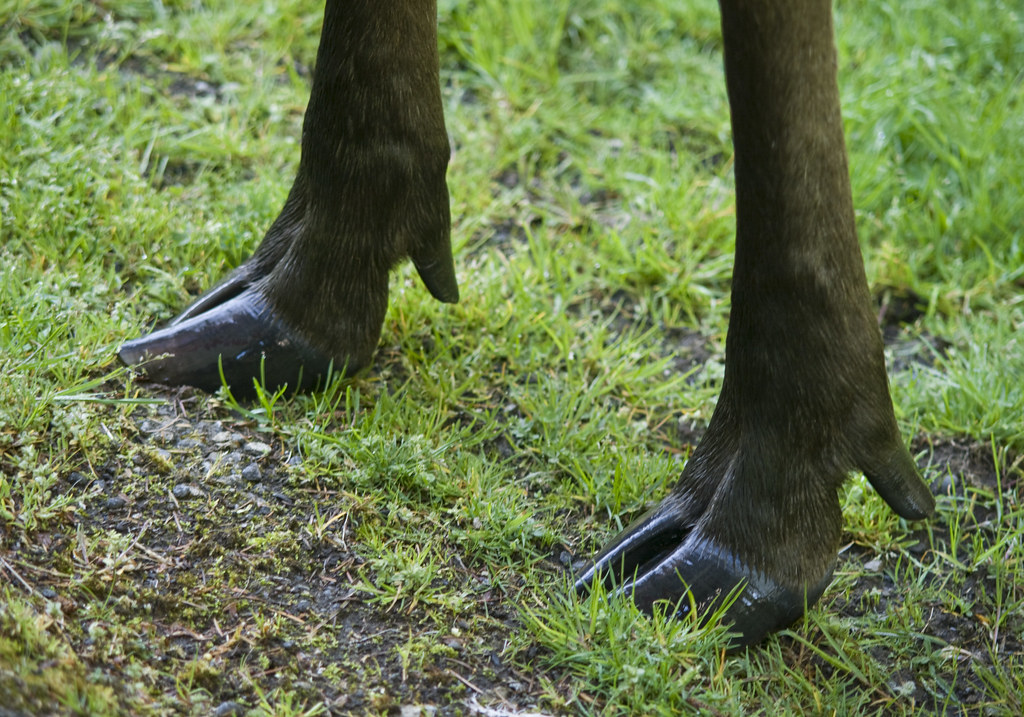
A moose’s hooves are not just designed for walking; they are formidable weapons in their own right. According to the Alaska Department of Fish and Game, moose use their hooves to defend themselves from predators, and these hooves are capable of inflicting serious damage when used in a kick. The sharp edges of a moose’s hooves can tear through flesh, and a well-placed kick can break bones or rupture vital organs. They are particularly dangerous when a moose is startled or feels cornered. A moose will often raise its front legs and kick with tremendous force, which can cause injury to anyone or anything in its path.
Even more dangerous, moose sometimes use their hooves to stomp on the ground with significant force, which can cause severe damage to the surrounding area. When moose engage in physical combat — such as fighting with other moose — their hooves become weapons in a battle of strength. The impact of their hooves can easily crush bones or knock someone unconscious. If a person is in close proximity to an aggressive moose, the hooves are often the most immediate threat. Their ability to inflict damage through kicking or stomping makes moose one of the most dangerous animals when it comes to physical confrontations.
5. Impaired Visibility in the Wild

One of the most dangerous aspects of encountering a moose in the wild is the difficulty of spotting them. Their dark fur and massive size make them difficult to see, especially in dense forests or at night. Because moose often move through thick brush or stand in low visibility areas, they can easily be hidden from view until it’s too late. This can be especially dangerous for drivers, as a collision with a moose can result in severe damage to vehicles and injuries to passengers. In some areas, moose may wander near roads or highways, and because of their size, they can be hard to see until the last second.
In low-light conditions, their dark coats blend into the surroundings, making them hard to spot for both drivers and pedestrians. The danger of striking a moose is compounded by their slow reaction time in the face of oncoming traffic. According to the National Park Service, moose often stand still when approached, making it difficult for drivers to avoid them. When an accident occurs, the results can be catastrophic because of the moose’s size, which can cause serious damage to both vehicles and the animal. Awareness of the risk of collisions with moose is crucial for anyone living or traveling in moose habitats.
6. Moose Are Less Predictable Than You Think

Moose may appear calm and even docile at times, but they can quickly become unpredictable when they feel threatened. Unlike many other wild animals that flee at the first sign of danger, moose can hold their ground or react with surprising aggression. A moose may seem harmless from a distance, but if it feels trapped or cornered, it can turn on a person or animal in a split second. This unpredictability makes it especially dangerous for hikers, campers, and anyone else who might encounter them in the wild. Moose have a reputation for being slow-moving and easygoing, but this is only the case when they feel safe.
When startled or when they perceive danger, they can become erratic and violent without warning. The key to avoiding a dangerous situation with a moose is recognizing the signs of distress before they escalate. If a moose starts stomping, snorting, or acting agitated, it’s best to back away slowly and avoid making sudden movements. Many people mistakenly underestimate the danger of a moose because of its calm demeanor, only to be caught off guard when the animal reacts aggressively. Their unpredictable nature makes it essential for anyone in moose territory to stay alert and avoid getting too close.
7. They Are Often Found in Remote Areas
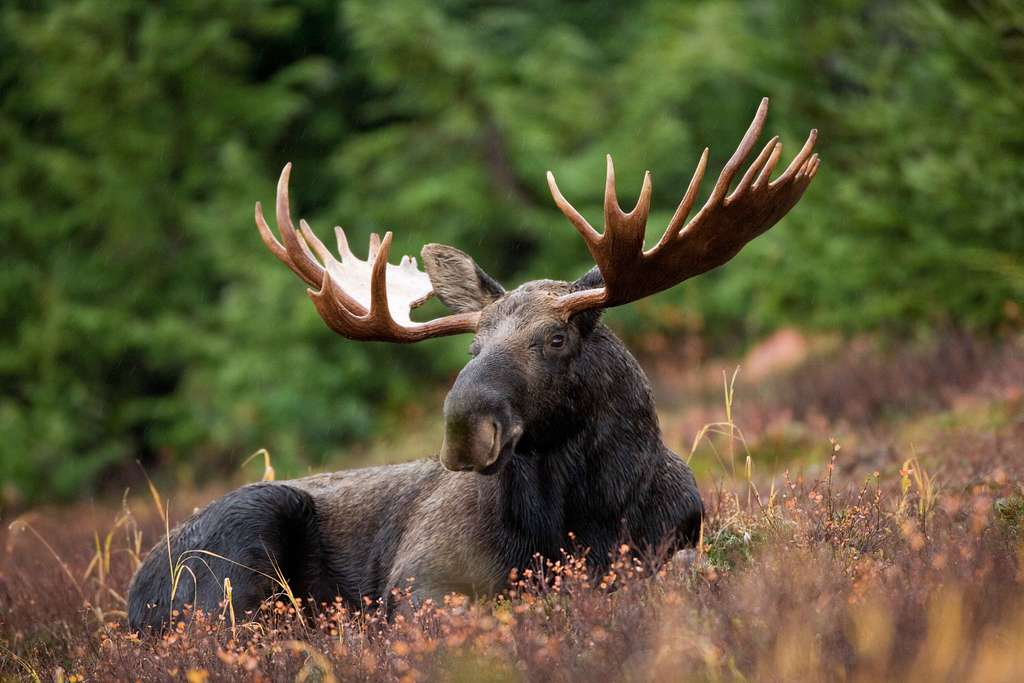
Moose are typically found in rural and remote regions, often in forests, wetlands, or near lakes and rivers. These areas are not only harder to navigate, but they are also places where encounters with humans are becoming more frequent due to urban sprawl. In these regions, the presence of humans can often lead to increased tension between people and moose. As cities and towns expand, moose are forced to move closer to human settlements in search of food and shelter. This puts people at greater risk of encountering these massive creatures, especially when they are least expected.
Many people living in or visiting these areas are unaware of the dangers posed by moose. In the wild, moose may seem peaceful and distant, but when they are startled or feel their territory is being infringed upon, they can become aggressive. Additionally, areas that are remote are often difficult to evacuate from quickly, increasing the danger during a moose encounter. In these settings, the risks associated with moose encounters are often greater because of the limited ability to quickly remove oneself from a dangerous situation. Being aware of the risks involved in areas where moose live can help prevent accidents from happening.
8. Hidden Dangers in Winter
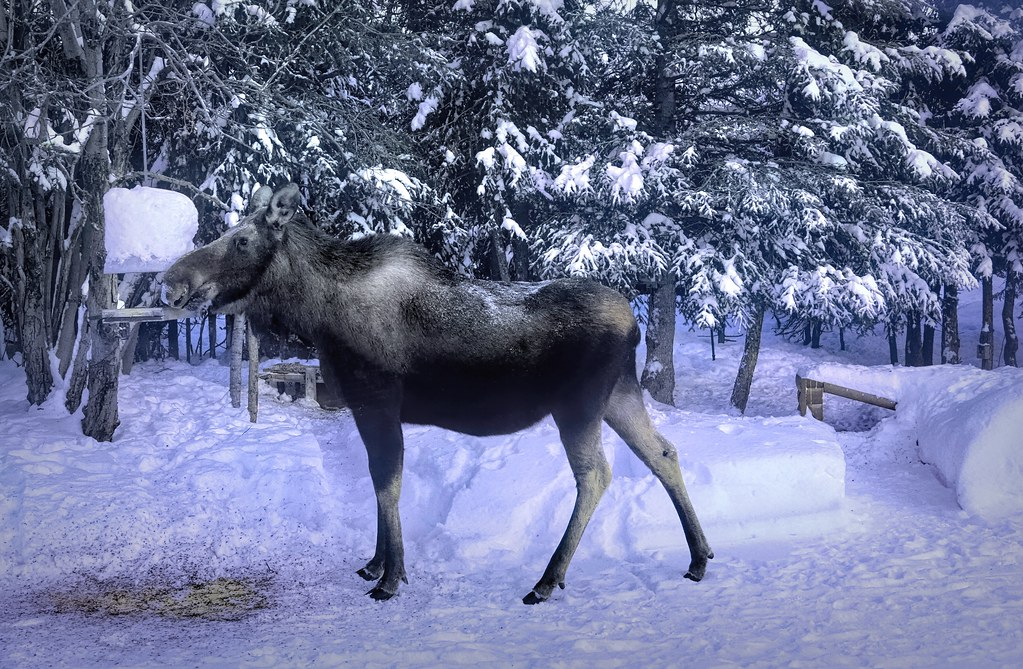
Winter is one of the most challenging times for moose, as they must deal with cold temperatures, deep snow, and limited food sources. During this time, moose become more irritable and stressed, which can make them more likely to lash out. The snow can make it difficult for moose to move or find enough food to survive, which leads to frustration and defensive behavior. As they struggle to find sustenance, moose become more protective of their space and more aggressive toward potential threats. In the harsh winter months, moose are more likely to wander into populated areas in search of food, increasing the chances of an encounter.
Additionally, their mobility is restricted in deep snow, which can cause them to feel trapped or vulnerable, leading to heightened aggression. Moose are also known to be more unpredictable during the winter because they are under more stress than usual. It is essential to give moose extra space during winter, as they may react more aggressively due to their decreased food supply and increased fatigue. Approaching a moose during this time can lead to unpredictable behavior, and it’s always safer to keep a wide distance.
9. Human-Moose Conflicts Are Increasing
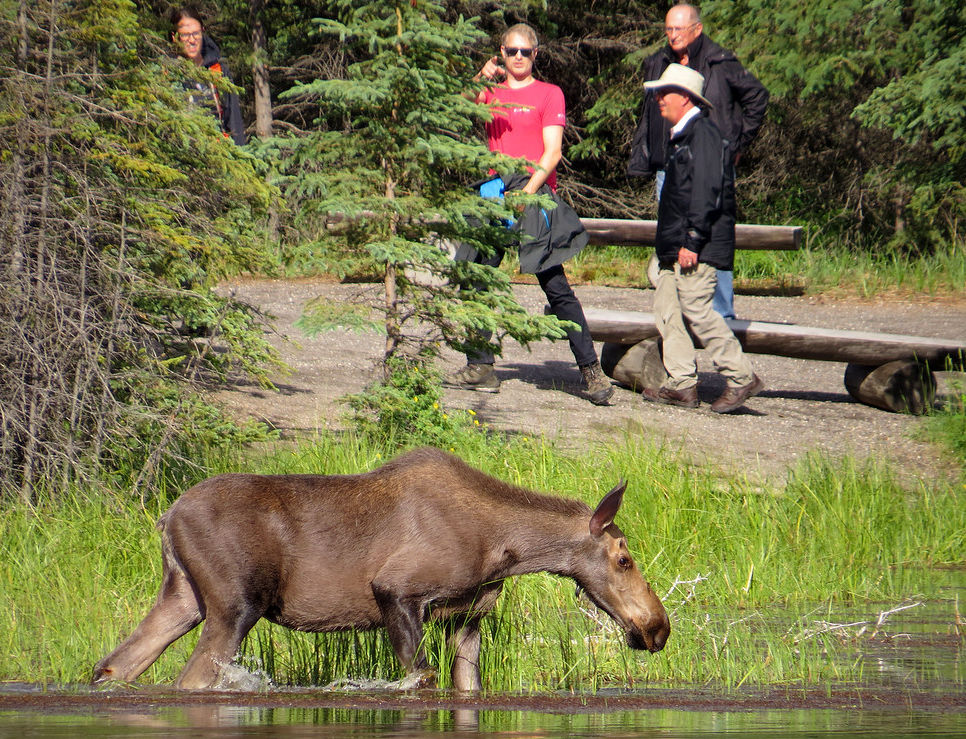
As human populations continue to grow, the risk of conflicts with moose is also on the rise. Expanding urban areas, as well as increased recreational activities in wilderness areas, have led to more frequent encounters between people and moose. While moose typically try to avoid humans, as their natural habitats shrink due to urbanization, they are forced into closer proximity to populated areas. This can lead to situations where moose feel threatened or cornered by human presence, resulting in more aggressive behavior. With more people living and traveling in moose territories, the likelihood of dangerous interactions increases.
Even people who may be familiar with moose behavior can still find themselves in harm’s way if they are not cautious. Because moose are often unpredictable and protective of their territory, it’s important to recognize the signs of a dangerous situation early. More and more people are coming into contact with moose, and these encounters are not always safe. The growing human-moose conflict is one reason why it’s essential to educate the public on how to avoid dangerous situations in moose habitats.
10. Moose Can Be Unpredictably Territorial

Moose are territorial animals, especially when it comes to their young. During certain times of the year, such as mating season and when females are raising calves, moose can become extremely protective of their space. This territorial behavior often leads to them acting defensively toward anyone they perceive as an intruder. Male moose, in particular, will actively defend their territories against other males and anything they deem as a threat. This can include humans, other animals, or even other moose that wander too close.
The territorial instincts of moose can turn a seemingly peaceful encounter into a dangerous one. If a moose feels that its space is being invaded, it will react aggressively, even without direct provocation. It’s important to remember that a moose’s behavior can change in an instant if it feels its territory is being challenged. Approaching a moose’s territory — especially if it has young nearby — is a risky move. Recognizing the signs of territoriality in moose and respecting their space can go a long way in avoiding confrontations.


